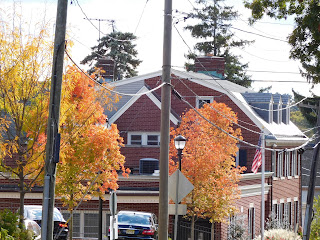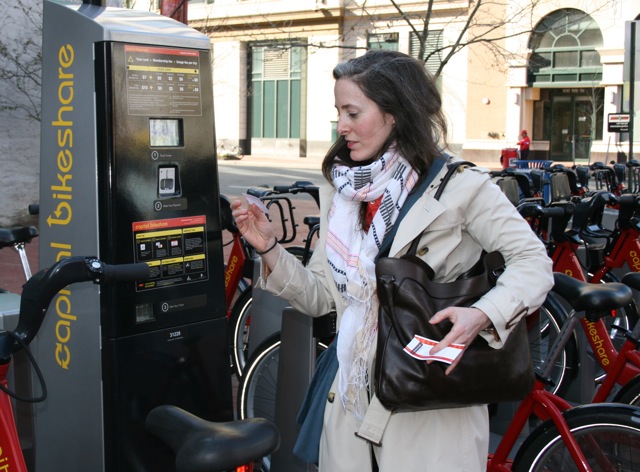or, perhaps how the city said "au revoir" to me.
I discovered Le Cafe des Chats while walking down rue St. Denis, trying to delay getting on the bus to the airport for as long as I could. It was raining but still agreeably mild; I found myself wishing I had a bike. I know, I could have taken a pair of Bixi's wheels, but I didn't want to deal with the terminals.
Cats are, to me, the most agreeable rainy-day companions. The ones who inhabit Le Cafe were rescued from local shelters. Management has a list of ground rules, which include not picking up the cats or disturbing their sleep. But, other than those sensible guidelines, the cafe has no restrictions; they'll let you come in and take a look, but if you want to sit down, they'll ask you to buy something eat or drink. I ordered--naturally--a "Meow-cacino".
If Le Cafe des Chats was a great way to leave Montreal, the Auberge Manoir Ville Marie made me feel very welcome and at-home from the moment I arrived.
It's a few minutes from the center of downtown, in a working-class French-speaking neighborhood that may be showing early signs of gentrification. One nice thing about its location is that it's very quiet: It's the sort of neighborhood in which most people are in bed by eleven or midnight because they're going to work in the morning. The ones I encountered were friendly and helpful when I asked for directions or was carrying my bags from the bus.
The hotel itself isn't merely self-consciously charming; it feels like a very, very human space. Much of that has to do with the proprietess, Shahrzad, who is also one of the most truly stylish people I have met in a long time. You can feel her enthusiasm for life; she talked excitedly about some of the artists who have stayed there--and whose exhibits she attended. I mentioned that I write and was happy that I could talk (however superficially, I later thought) about Rumi and other Persian poets.
She carved this most welcoming of spaces out of an old post office building. Some work is still being done on the sidewalk in front of it, but inside, you'll can bask in the glow of your day's adventures and get a good nights' sleep.
(P.S. The hotel's staff let me keep the bike I rented in a storeroom.)
Another establishment I highly recommend is Velo Urbain. One thing I found very interesting is that the shop repairs and sells used bikes; they don't sell new bikes, but all of their rentals--including mine--are new. As the owner, Phillipe, explained to me, there are "moins des problemes" in doing so.
He and I spoke--and, before I arrived, exchanged e-mails--in French. However, one of his employees, Thomas, is thoroughly bilingual in English and French. Both are very helpful; in fact, Thomas realized, in fitting the bike to me, that I have rather long legs for my height and moved me to a larger-size frame than the one he'd normally recommend for a person of my height.
Even if the Norco I rode weren't brand-new, it still would have been better than most other rented bikes. The icing on the cake was this: $50 CAD for three full days. (At current exchange rates, that's a bit less than $40 USD.) They ask only that you leave some form of ID (I left my New York State non-drivers' ID, issued by the Department of Motor Vehicles) and that if you're renting for a full day, weekend or week, that you return the bike before they close (7pm; they open at 11 am). You don't need a reservation; you can just show up and ask to rent.
Velo Urbain is located on la rue Papineau, near l'Avenue Mont-Royal. What that means, of course, is that if you want to challenge yourself right away, you turn left on the Avenue and start riding up the Mont. Or, if you want to ease yourself into riding, you can explore the neighborhood around the avenue, which abounds with cafes, restaurants and stores of just about every type imaginable.

























